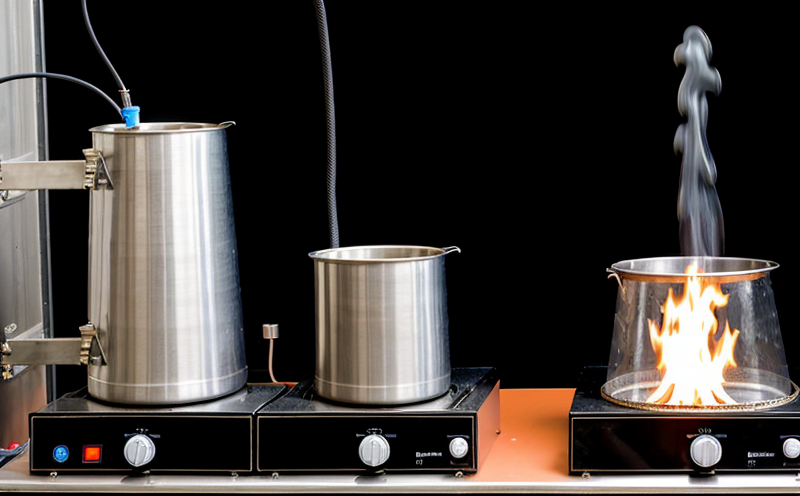Fire Reaction Testing with Heat Release Measurement
Fire Reaction Testing with Heat Release Measurement is a critical service that evaluates how materials react to fire. This testing helps determine the heat release rate (HRR), which measures the amount of heat produced per unit area as a material burns. Understanding HRR provides valuable insights into the potential for flammability and the likelihood of fire spread in various environments.
The process involves subjecting materials or assemblies to controlled conditions that simulate real-world scenarios, such as those found in residential, commercial, and industrial settings. The testing apparatus includes calorimeters, which measure heat release over time during combustion. This data is crucial for compliance with international standards like ISO 56602-1:2019 and ASTM E724.
During the test, materials are exposed to a controlled flame source, and the calorimeter records the temperature rise in the surrounding air. The heat release rate is calculated by integrating the power output over time. This allows for an accurate assessment of the material's behavior under fire conditions. The results can be used to select materials that meet specific performance requirements or to improve products based on identified weaknesses.
The importance of this testing cannot be overstated, especially in sectors such as building construction where fire safety is paramount. By understanding how materials perform in fires, engineers and designers can make informed decisions about material selection and design modifications to enhance overall fire resistance.
Test Parameters and Specimen Preparation
The specimen preparation process involves selecting appropriate test samples that are representative of the material or assembly being tested. The size and shape of these specimens must adhere to standard guidelines specified by relevant standards such as ISO 56602-1:2019.
Once prepared, specimens undergo rigorous testing in controlled environments. The calorimeter used for this purpose measures the heat released during combustion at different rates depending on the intensity of the flame applied. This allows for a detailed analysis of the material's thermal stability and resistance to fire spread.
Instrumentation
The primary instrument used in this type of testing is the calorimeter, which plays a crucial role by providing precise measurements of heat release during combustion. Additionally, other supporting instruments like thermocouples and data acquisition systems ensure accurate recording of temperature changes throughout the test.
These tools provide essential information that helps in assessing the suitability of materials for use in fire safety applications. By leveraging advanced technology, laboratories can offer reliable results that contribute significantly to ensuring public safety.
Why It Matters
- Regulatory Compliance: Meeting stringent regulations set forth by bodies like the International Organization for Standardization (ISO) and ASTM ensures that products are safe and effective in preventing fires.
- Risk Management: Understanding material performance under fire conditions allows organizations to mitigate risks associated with potential accidents or disasters.
Fire reaction testing is essential for ensuring compliance with regulatory requirements and enhancing risk management strategies. It plays a vital role in protecting lives, property, and infrastructure from the devastating effects of fires.
Quality and Reliability Assurance
- Consistent Results: Using advanced calorimetric techniques ensures that tests yield consistent results across multiple trials, enhancing reliability.
- Calibration Standards: Regular calibration of equipment against internationally recognized standards guarantees accuracy and precision in measurements.
Quality assurance measures are critical to maintaining high standards throughout the testing process. By adhering to strict protocols and using cutting-edge technology, laboratories can ensure reliable and accurate results every time.
Competitive Advantage and Market Impact
- Innovation: Early adoption of fire reaction testing enables companies to innovate safer products faster than competitors who lag behind in adopting these technologies.
- Customer Satisfaction: Offering robust quality assurance through comprehensive fire reaction testing enhances customer trust and satisfaction, leading to increased market share.
Adopting fire reaction testing gives companies a significant competitive edge by fostering innovation and building strong relationships with satisfied customers. This approach not only drives growth but also contributes positively to the reputation of the organization within its industry.





